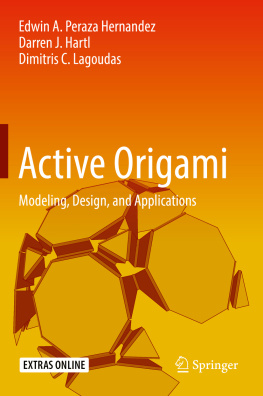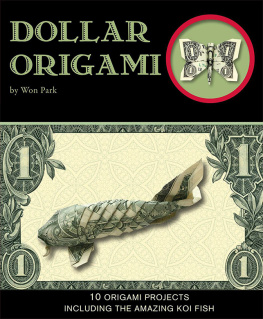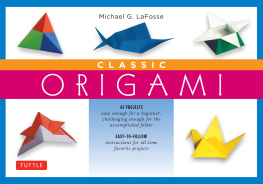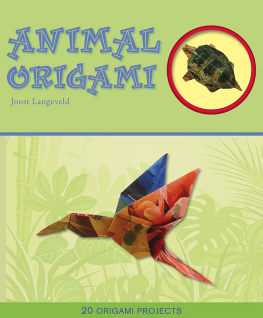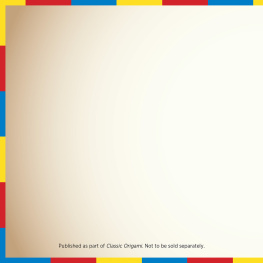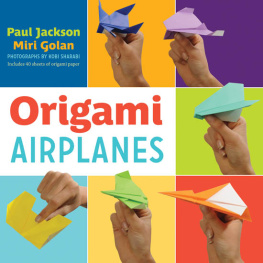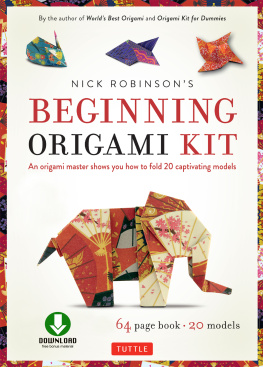Edwin A. Peraza Hernandez
Department of Aerospace Engineering, Texas A&M University, College Station, TX, USA
Darren J. Hartl
Department of Aerospace Engineering, Texas A&M University, College Station, TX, USA
Dimitris C. Lagoudas
Department of Aerospace Engineering, Texas A&M University, College Station, TX, USA
ISBN 978-3-319-91865-5 e-ISBN 978-3-319-91866-2
https://doi.org/10.1007/978-3-319-91866-2
Library of Congress Control Number: 2018944147
Springer International Publishing AG, part of Springer Nature 2019
This work is subject to copyright. All rights are reserved by the Publisher, whether the whole or part of the material is concerned, specifically the rights of translation, reprinting, reuse of illustrations, recitation, broadcasting, reproduction on microfilms or in any other physical way, and transmission or information storage and retrieval, electronic adaptation, computer software, or by similar or dissimilar methodology now known or hereafter developed.
The use of general descriptive names, registered names, trademarks, service marks, etc. in this publication does not imply, even in the absence of a specific statement, that such names are exempt from the relevant protective laws and regulations and therefore free for general use.
The publisher, the authors and the editors are safe to assume that the advice and information in this book are believed to be true and accurate at the date of publication. Neither the publisher nor the authors or the editors give a warranty, express or implied, with respect to the material contained herein or for any errors or omissions that may have been made. The publisher remains neutral with regard to jurisdictional claims in published maps and institutional affiliations.
This Springer imprint is published by the registered company Springer International Publishing AG part of Springer Nature.
The registered company address is: Gewerbestrasse 11, 6330 Cham, Switzerland
Preface
Over the past decade, there has been an obvious expansion in the exploration and application of mathematical and computational origami. Ted Talks, documentaries such as Between the Folds, and pioneers in computational origami such as Robert Lang, Erik Demaine, Koryo Miura, and Tomohiro Tachi have shown us that the principles of folding two-dimensional sheets into three-dimensional forms can lead to both beautiful art and practical engineering solutions, often simultaneously. The ability of origami-based designs to be relatively easily fabricated in two dimensions, to enable deployment of large structures from small initial volumes, and to be inherently reconfigurable has captured the attention and imagination of engineers from across the world. As researchers in the nonlinear mechanics of active materials and smart structures, we have ourselves been intrigued by the theoretical challenges and implementation potential of folding structures since the topic first came to the forefront of our national research conversation, where it is expected to remain for some time.
This book represents our contribution to this growing field. Here we apply the three pillars of solid mechanics (conservation laws, constitutive modeling, and most especially kinematics) and combine them with our interest in structural design to present a full theory for origami structures. As the fundamentals of traditional origami theory (creased folds, flat foldability, etc.) have been well addressed in prior works, we focus in particular on the folding of engineering materials, including those having strain limitations and formed into sheets of finite thickness. We consider elastic and shape memory materials and develop the mathematical relations needed to design flat sheets for folding into arbitrary shapes and to model their full mechanical response as they do so.
The book begins with an overview of recent applications and theoretical developments of origami. Since a primary contribution of this work is the modeling of active origami structures having self-folding capabilities, a comprehensive survey of materials that enable this behavior and of applications that take advantage of it is presented. Toward the simulation of such applications, Chap. begins the technical treatment by reviewing the kinematic modeling of origami structures having creased folds. This allows for the establishment of a framework and especially notation that will carry the reader through the remainder of the book.
The design of three-dimensional forms from two-dimensional reference sheets is first addressed in Chap. with the mechanics of active origami to develop a framework for the design of self-folding structures that morph toward goal shapes under the application of nonmechanical stimuli (e.g., thermal, chemical, electromagnetic).
Throughout the book, the reader is provided with clear development examples as well as problems that assess understanding and challenge further thought. Perhaps most importantly, the supplemental material includes the full MATLAB scripts that represent the implementation of mathematical theories derived in Chaps.. The actual scripts used to generate the numeric and graphical results associated with several examples in these chapters are provided. It is hoped that the curious and motivated reader will use these tools to further advance the field of origami engineering and the applications of active origami.
We expect the readership of this book to range from advanced undergraduate students to experienced engineers and researchers with interest in origami engineering. Chapter .
The authors would like to gratefully acknowledge a number of individuals and entities that have made this unified body of work possible. Our collaborators in our research on active origami, and most especially Ergun Akleman and Richard Malak, have contributed much to our thinking and progress. We appreciate the positive comments of individuals such as Robert Lang and Glaucio Paulino as they followed our developments over the past years. We would like to express our sincere gratitude to Robert Lang, Jun Mitani, Ying Liu, Michael Dickey, Samuel Felton, Tomohiro Tachi, Elliot Hawkes, David Gracias, Larry Howell, Milton Garza, Beatriz Borges, and others for providing figures used in this book. The proofreading help from Sameer Jape, Jacob Mingear, Pedro Leal, Patrick Walgren, Hannah Stroud, William Scholten, Brent Bielefeldt, Gregory Wilson, and Jobin Joy is also greatly appreciated. This monograph would not have been possible without the help of undergraduate researchers Cullen Nauck and Trent White, who assisted in the development of the Supplemental Materials. The joint support of the National Science Foundation (NSF) and the Air Force Office of Scientific Research (AFOSR) over the last 5 years with the Origami Design for Integration of Self-assembling Systems for Engineering Innovation (ODISSEI) program enabled all of the authors efforts described herein, in addition to many of the other outside developments reviewed in Chap..
Origami engineering is an important topic with potentially many new applications yet to be developed. We hope that our efforts combined with the support of our families and colleagues have allowed us to produce an important resource for those looking to make advances in the theory and practice of this exciting field.

